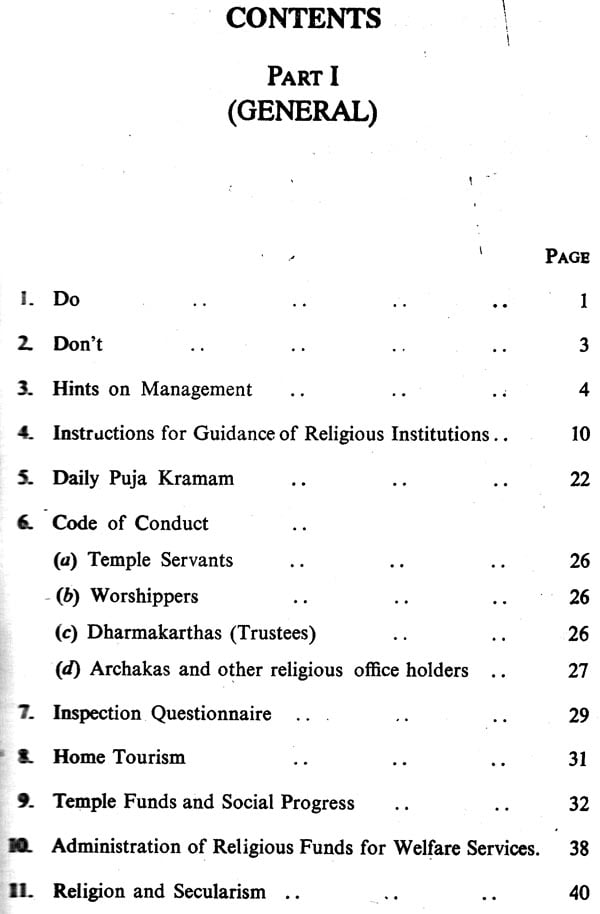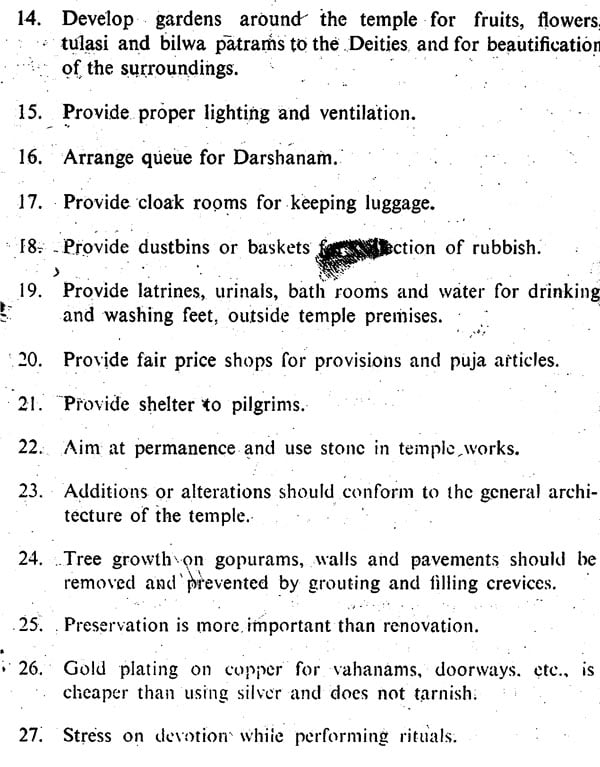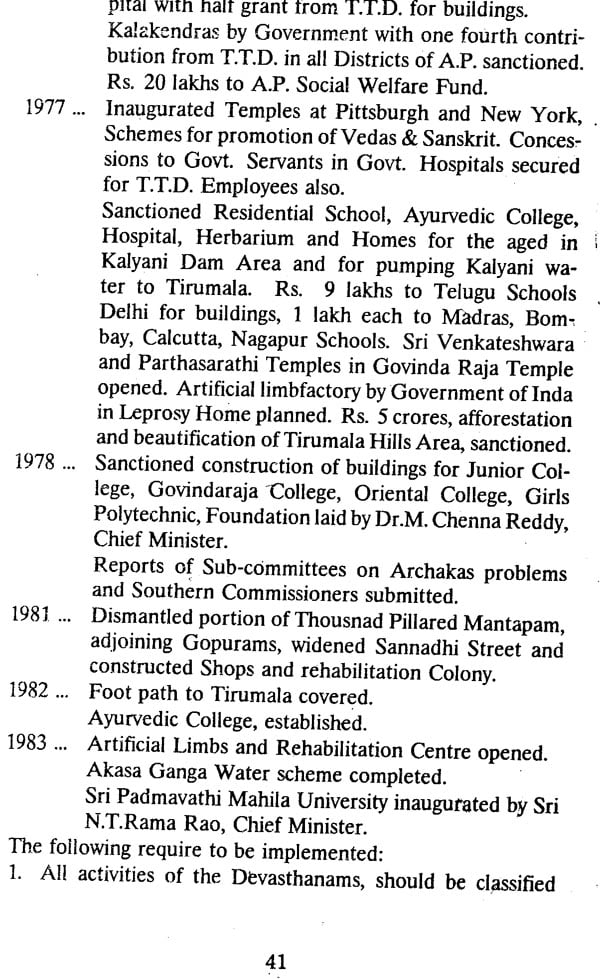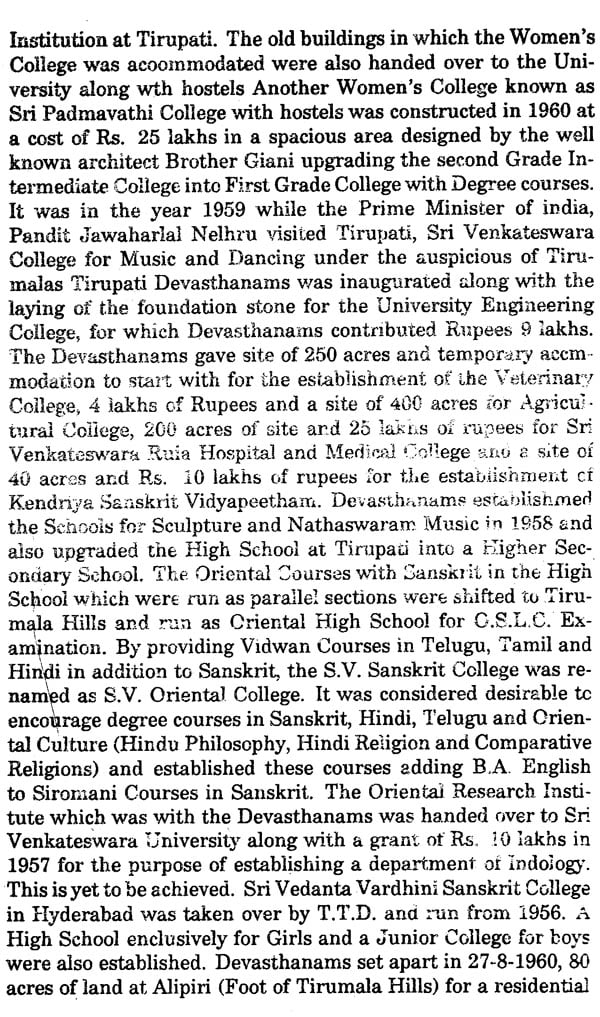
Administration of Temples
Book Specification
| Item Code: | NAW784 |
| Author: | C. Anna Rao |
| Publisher: | Tirumala Tirupati Devasthanams, Tirupati |
| Language: | English |
| Edition: | 2014 |
| Pages: | 264 |
| Cover: | PAPERBACK |
| Other Details | 8.50 X 5.50 inch |
| Weight | 290 gm |
Book Description
During the time of the Vedas, underlying the various personifications of elemental forces, there were two basic ideas, namely, Satyr (truth) and Rita (eternal cosmic order). The Rig Veda states that the earth is upheld not by the will of God but by Satyr of which God is the supreme exponent. After examining the Vedas as a whole, one realizes that they embody a doctrine of one divine substance pervading everything.
It has been rightly noted that Hinduism is not a special cult or form of worship but is intrinsically a way of life and is all-comprehensible. This way of life is founded upon the inseparable unity of the material and spiritual world and upon the continuous striving to comprehend the significance of the phenomena of growth, existence and dissolution and an after-life or lives.
Hinduism and Indian thought and philosophy developed in several stages. In the Vedic period there is no specific mention temples or mutts but only of the Supreme Being in its various Manifestations, namely, Agni (Fire), Surya (sun), Us has (Dawn), (Wind), Varna (the God of eternal order and of the seas), the Ashbins. These and various other divinities were prospered by hymns and sacrifices, but as far as one can see no representation of them nor any abode for them existed. The Aranyakas, the Brahmanas and Upanishads came next. At that period there was a perceptible reaction against mere rituals and sacrificial observances. The outlook then was that the knowledge and perception of the Supreme Being should be gained not by reasoning or argument but by personal experience and realization preferably gained through a Guru and by people performing actions without any attachment to their fruits. In the, later Upanishads the idea of a personal God is developed and devotion to such Godhead is inculcated. Such ideas were fully developed, expanded* and sublimated in the Ramayana and the Mahabharata and in the various Puranas and Upapuranas. The ideas so evolved have survived till now. As is well known, the Bhagavat Gita is embodied in one of the parkas of the Mahabharata and along with the Vedas and the Brahma sutras constitutes the acknowledged substratum or all the varieties of Hindu belief and philosophical thought.
Indeed Buddha himself says: "There are four truths of the Brahmanas which have been realized by me by my own higher knowledge and are now made known." Thus it will be noticed that Hinduism is more than a special cult or particular type of worship.
Temples and Mutts are the two principal institutions of the Hindu religious system. They supplement each other in regard to the spiritual welfare of the persons belonging to that system; while temples afford opportunities for prayer to and adoration of the Supreme Being in His various manifestations, mutts exist chiefly for the imparting of spiritual instruction by preceptors who reside there along with their " antivenin or disciples for the purpose of the acquisition and spread of religious knowledge.
Book's Contents and Sample Pagesa













